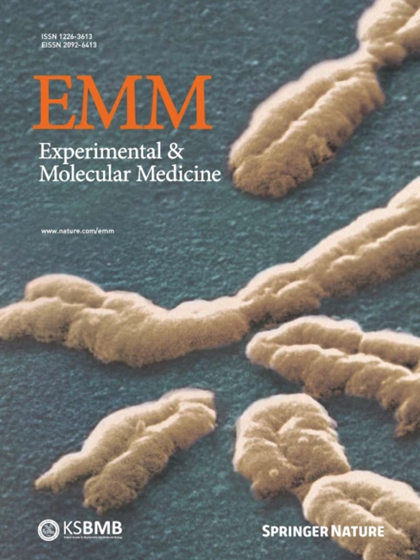Orchestrating epigenetics: a comprehensive review of the methyltransferase SETD6
IF 9.5
2区 医学
Q1 BIOCHEMISTRY & MOLECULAR BIOLOGY
引用次数: 0
Abstract
Transcription is regulated by an intricate and extensive network of regulatory factors that impinge upon target genes. This process involves crosstalk between a plethora of factors that include chromatin structure, transcription factors and posttranslational modifications (PTMs). Among PTMs, lysine methylation has emerged as a key transcription regulatory PTM that occurs on histone and non-histone proteins, and several enzymatic regulators of lysine methylation are attractive targets for disease intervention. SET domain-containing protein 6 (SETD6) is a mono-methyltransferase that promotes the methylation of multiple transcription factors and other proteins involved in the regulation of gene expression programs. Many of these SETD6 substrates, such as the canonical SETD6 substrate RELA, are linked to cellular pathways that are highly relevant to human health and disease. Furthermore, SETD6 regulates numerous cancerous phenotypes and guards cancer cells from apoptosis. In the past 15 years, our knowledge of SETD6 substrate methylation and the biological roles of this enzyme has grown immensely. Here we provide a comprehensive overview of SETD6 that will enhance our understanding of this enzyme’s role in chromatin and in selective transcriptional control, the contextual biological roles of this enzyme, and the molecular mechanisms and pathways in which SETD6 is involved, and we highlight the major trends in the SETD6 field. The chemical modification of proteins, such as lysine methylation, influences their role in the cell. This review focuses on an epigenetic enzyme called SETD6 that adds small chemical methyl groups to certain proteins. Over the past 15 years, research on SETD6 has shown that it plays an important role in human health and disease. The interactions of SETD6 with other proteins, particularly its ability to chemically modify them, have been shown to influence the individual functions of these proteins. This influence affects cells at the epigenetic level—affecting gene regulation—as well as cell behavior. Whether SETD6 promotes or suppresses cancerous properties depends on the type of cancer. Therefore, research focusing on the role of SETD6 in the cell is crucial to understand whether SETD6 could be a promising target for therapeutic intervention. .

调控表观遗传学:甲基转移酶SETD6的综合综述。
转录是由影响靶基因的复杂而广泛的调控因子网络调控的。这一过程涉及大量因素之间的串扰,包括染色质结构、转录因子和翻译后修饰(PTMs)。在PTM中,赖氨酸甲基化已成为发生在组蛋白和非组蛋白上的关键转录调控PTM,赖氨酸甲基化的几种酶调节因子是疾病干预的有吸引力的靶点。SET结构域蛋白6 (SETD6)是一种单甲基转移酶,可促进多种转录因子和其他参与基因表达程序调节的蛋白质的甲基化。许多这些SETD6底物,如典型的SETD6底物RELA,与与人类健康和疾病高度相关的细胞途径有关。此外,SETD6调节多种癌症表型并保护癌细胞免于凋亡。在过去的15年中,我们对SETD6底物甲基化和该酶的生物学作用的了解已经大大增加。本文对SETD6进行了全面的概述,以加深我们对该酶在染色质和选择性转录控制中的作用,该酶的环境生物学作用,以及SETD6参与的分子机制和途径的理解,并强调了SETD6领域的主要趋势。
本文章由计算机程序翻译,如有差异,请以英文原文为准。
求助全文
约1分钟内获得全文
求助全文
来源期刊

Experimental and Molecular Medicine
医学-生化与分子生物学
CiteScore
19.50
自引率
0.80%
发文量
166
审稿时长
3 months
期刊介绍:
Experimental & Molecular Medicine (EMM) stands as Korea's pioneering biochemistry journal, established in 1964 and rejuvenated in 1996 as an Open Access, fully peer-reviewed international journal. Dedicated to advancing translational research and showcasing recent breakthroughs in the biomedical realm, EMM invites submissions encompassing genetic, molecular, and cellular studies of human physiology and diseases. Emphasizing the correlation between experimental and translational research and enhanced clinical benefits, the journal actively encourages contributions employing specific molecular tools. Welcoming studies that bridge basic discoveries with clinical relevance, alongside articles demonstrating clear in vivo significance and novelty, Experimental & Molecular Medicine proudly serves as an open-access, online-only repository of cutting-edge medical research.
 求助内容:
求助内容: 应助结果提醒方式:
应助结果提醒方式:


